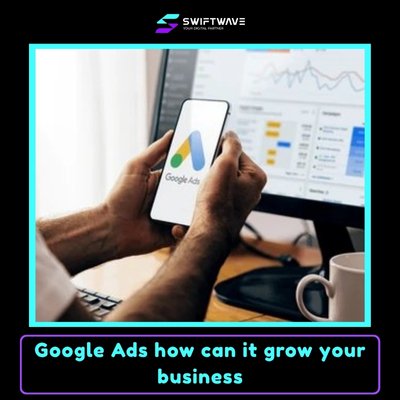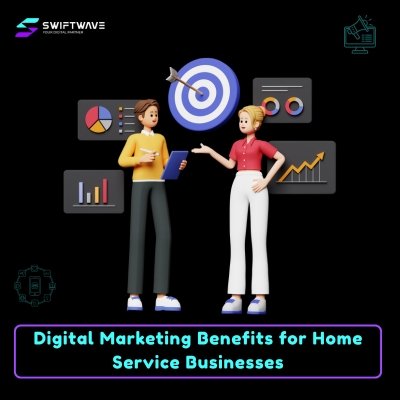Online Internet Marketing has become the backbone of modern business growth. In a world where over 5.4 billion people are connected to the internet, businesses can no longer depend on traditional marketing methods to reach customers.
Whether you’re a small startup or a large enterprise, the online space provides unmatched access to potential buyers, measurable results, and targeted communication.
From search engines to social media, and from email marketing to paid ads, every digital channel plays a role in building visibility, generating leads, and driving revenue.
Success today depends on how well a business adapts, analyzes data, and engages its audience through the right mix of online strategies.
Online Internet Marketing for Businesses
In this guide, we will explain how online internet marketing helps businesses grow, the key strategies that work, and how you can build a practical plan for long-term success.

Why Online Marketing Isn’t Optional Anymore
The digital world has changed how people find, compare, and buy products or services. Traditional marketing like billboards, flyers, or TV ads still plays a role, but it no longer controls attention the way it once did.
According to Statista, over 90% of consumers now research online before making a purchase, even for local businesses. This means if your business isn’t visible online, you are invisible to most potential customers.
Online marketing is essential because it gives you direct access to your audience, measurable performance, and flexibility to adapt fast. You can track every click, lead, and conversion.
You can test messages and know within days which one works. Unlike print or TV, you don’t have to wait weeks to see results. It also provides a 24/7 presence — your website, ads, and content keep working even when you’re offline.
In short, online marketing isn’t optional because customer attention has shifted online. Businesses that fail to adapt lose relevance, while those that embrace it gain visibility, trust, and growth.
Core Pillars of Online Internet Marketing
Online marketing works through a mix of channels that serve different purposes. Each channel plays a role in building awareness, generating leads, and converting sales.
The first pillar is Search Engine Optimization (SEO) — the process of making your website appear higher on Google search results. People search for answers daily, and ranking on the first page means consistent organic traffic. SEO requires keyword optimization, quality content, and a technically sound website.
The second pillar is Pay-Per-Click (PPC) advertising, such as Google Ads or Meta Ads. These platforms allow you to reach specific audiences instantly.
You pay only when someone clicks on your ad. It’s an effective short-term strategy to generate leads and sales while SEO builds long-term growth.
Next is Social Media Marketing, which helps businesses build relationships with audiences. Platforms like Facebook, Instagram, TikTok, and LinkedIn give you direct communication with customers through posts, videos, and ads.
The focus should be consistency, authenticity, and engagement.
Another key area is Email Marketing, which is one of the highest-ROI methods. It helps you maintain customer relationships, promote offers, and share updates directly in inboxes.
The return can be massive when done with targeted, valuable communication.
Finally, Content Marketing connects all the dots. Blogs, videos, infographics, and guides build authority and attract potential buyers naturally.
High-quality, useful content makes your brand the go-to source in your niche and supports SEO, ads, and social efforts.
Together, these pillars create a complete marketing system — where traffic comes in, engagement builds, and conversions happen predictably.
Real Numbers: What Works and What Doesn’t
To make smart decisions, businesses must look at data, not assumptions. Based on industry reports from HubSpot and WordStream, here’s what actually works in 2025.
SEO remains one of the most sustainable channels, with an average return of 22:1 over time. It doesn’t deliver instant results but becomes more powerful the longer you invest.
Google Ads and Meta Ads show an average ROI of 2:1 when campaigns are well-targeted. Social media ads are effective for awareness and remarketing but can be expensive for direct sales if not optimized.
Email marketing stands out with an average ROI of 36:1 — making it ideal for repeat customers and retention. Content marketing generates about 5:1 ROI, but results grow gradually as authority builds.
The data shows that no single channel is perfect. The most profitable businesses use a combined strategy — using SEO and content for organic reach, PPC for instant visibility, and email for long-term retention.
Businesses relying on one source of traffic face instability when algorithms or ad costs change. The key lesson: balance your marketing mix for sustainable growth.
How to Build a Practical Online Marketing Strategy
A strong strategy begins with clear, measurable goals. Define what success means — more leads, higher sales, or brand recognition. Avoid vague targets. For example, aim to “increase website leads by 30% in 90 days” rather than “get more customers.”
Next, identify your target audience. Understand who they are, what problems they face, and what platforms they use. This helps shape your message and choose the right channels.
Once that’s clear, build a conversion-focused website. It should load fast, look professional, and clearly explain what you offer. Every page must guide visitors to take an action — contact, buy, or subscribe.
Then, create content that solves real problems. Write blogs, produce short videos, or share tips that address customer pain points. This builds credibility and feeds SEO and social media.
When your base is ready, launch ads with a small budget to test what converts best. Analyze every click, cost, and lead. Use that data to refine and scale what works.
Finally, track your results using analytics tools. Focus on metrics that matter — conversion rates, lead quality, and cost per acquisition. Adjust campaigns regularly based on performance data. A good online marketing strategy is built on testing, learning, and improving.
Common Mistakes Businesses Make
Many businesses waste time and money in online marketing due to poor planning. The most common mistake is starting without a clear goal. Running ads or posting on social media without direction leads to random results.
Another frequent error is ignoring the customer journey. Businesses focus only on getting clicks but forget to nurture leads through emails, retargeting, or valuable content. Without follow-up, most potential customers never return.
Some rely too heavily on one platform, like only Facebook or only Google Ads. This creates risk when costs rise or algorithms change. Others ignore SEO completely and depend only on paid ads — which stops the moment the budget runs out.
A weak website is another issue. Many businesses drive traffic to sites that are slow, confusing, or not mobile-friendly, resulting in high bounce rates.
Lastly, poor tracking and analytics lead to bad decisions. Without data, businesses keep spending without knowing what’s working. Avoiding these mistakes means setting goals, diversifying channels, maintaining consistency, and always measuring results.
Future of Online Marketing (2025 and Beyond)
Online marketing continues to evolve rapidly. In 2025, three trends dominate the landscape.
First, AI-driven personalization is reshaping campaigns. Businesses now use tools that analyze user behavior and automatically adjust messages, timing, and targeting to increase engagement.
Second, video content has taken center stage. Short-form videos on platforms like TikTok, Instagram Reels, and YouTube Shorts now capture most user attention. Brands that communicate visually have a clear advantage.
Third, data privacy and transparency are becoming non-negotiable. With new regulations, businesses must prioritize consent-based marketing and handle customer data responsibly.
Voice search, chatbots, and automation tools are also making interactions faster and more direct. The businesses that adopt these technologies while keeping authentic human communication will stand out. The core principle remains the same — deliver real value and communicate clearly.
Action Steps: Where to Start Today
If you’re ready to implement online marketing, start simple and structured. Begin by auditing your current digital presence. Check your website’s loading speed, mobile performance, and clarity of message. Ensure all contact forms and links work properly.
Next, focus on visibility. Create or update your Google Business Profile so customers can find you easily. Start producing basic SEO content like service pages or blogs answering common questions in your industry.
Set up a small advertising campaign to test which audiences respond best. Use that data to refine your targeting and messaging. Begin building an email list to stay connected with leads and customers.
Once the basics are running, measure your performance weekly. Track what brings traffic, what generates leads, and where you’re losing attention. Based on results, scale what works and cut what doesn’t.
Online marketing is not a one-time project; it’s an ongoing system. The earlier you start and the more consistently you improve, the stronger your business becomes.
Conclusion
Online Internet Marketing is not just a trend it’s the foundation of modern business success. In today’s marketplace, every customer journey begins online, and businesses that fail to show up lose visibility and relevance.
A strong digital presence built on SEO, social media, ads, and content marketing allows companies to attract, engage, and retain customers with precision.
The real power lies in using data to guide every decision what works, what converts, and where to scale. By setting clear goals, testing strategies, and staying consistent, any business can turn online marketing into a predictable growth engine.
In short, success now depends on how effectively your business shows up, communicates, and converts online — because in this digital age, visibility equals opportunity.



